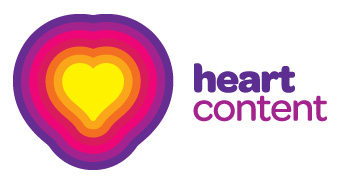The 3 Key Stages of Customer Engagement & How to Use Them in Your Business
/Depending on where they are in their journey, customers need different things from your marketing message.
In the marketing world, this journey is most commonly known as the stages of customer engagement.
Some marketers categorise this journey in as many as 12 different stages. But in my view, this makes things far more complicated than they need to be.
And SMEs don’t need more complicated when it comes to maximising the potential of your marketing. You need simple, clear and easy to implement.
In this article, I’ll describe what the three most important stages of the Customer Engagement journey are, and how knowing them, and understanding the needs of your customer at each stage, can help you find and retain your ideal customer.
What are the 3 Key Stages of Customer Engagement
As I’ve already mentioned, some marketers outline up to 12 stages in the customer engagement journey.
But it’s my belief that there are three stages you should take the time to understand, making sure that your marketing strategy has a plan for each of these stages.
They are Awareness, Action and Advocacy – the three As of Customer Engagement.
Let’s take a look at what they are, and how you should engage each of your customers as they make their way through the stages.
Customer Engagement Stage #1 – Awareness
I characterise the Awareness stage as when your customer becomes aware that your business night just have the solution to their problem.
Now we can break this down further into “micro” stages of awareness - for example, the customer becoming aware of their problem and then becoming aware that there is a solution, and then becoming aware of you.
But I like to approach it more simply than that. Because it makes it more straightforward for our marketing.
In the Awareness stage, your job is to help show your potential customer that YOU have the solution to their PERCEIVED problem.
I’ll say that again.
The job of your messaging at the Awareness stage of Customer Engagement is to show your potential customer that you have the answer to their PERCEIVED problem.
The perceived part is important.
Because how your customer views their problem, has a huge impact on how you create messaging at the awareness stage.
Here’s an example.
In my business, my core service is delivering Brand Story Strategy.
Brand Story Strategy is the solution to just about every marketing challenge you face in your business. But when you’re looking for a solution to your marketing challenges, you’re not necessarily going to be searching for help with your brand.
So, as I’m helping you build awareness of the solution I offer, I talk a LOT about solving marketing challenges.
My messaging takes on the language of how my customer describes their challenge.
Most of them think they have a marketing or content problem.
And they do. But the answer is not more marketing. Or another marketing agency. It’s about getting their BRAND STORY in the right place first.
Because this will change the way they look at their marketing.
So, my messaging during the awareness phase, focuses a lot on the pain points of my potential customers and the way they word it.
In the Awareness Stage, your messaging should…
Show that you understand what your customer thinks their problem is
Communicate that you have the solution
Give them enough information to feel confident to take the next step.
Don’t know what your customer thinks their problem is?
Then you need to get busy asking questions.
My Understanding Your Tribe Workbook will help. Get your copy here.
Customer Engagement Stage #2 – Action
At the Action Stage, your customer has signed off on a project, or taken action to make a purchase and is looking forward to their problem being solved.
As with all these key steps, the Action Stage can be broken down into micro steps (some marketers see the action stage as starting once your potential customer engages with you).
For the purposes of my definitions though, the Action Stage is when your potential customer has become an actual customer.
What’s most important to understand in the Action Stage is being clear about the opportunity you have to prepare your customer for the Advocacy Stage (which we’ll talk about more in a moment).
In the Action Stage, your messaging should…
Reassure your customer that they’ve made a great decision
Communicate your delivery and how it’s meeting the promises you made at the awareness step
Educate your customer so they better understand their actual problem and how they can solve it even more effectively by broadening their knowledge.
Customer Engagement Stage #3 – Advocacy
Customer Advocacy is the holy grail of customer engagement.
When your customers become advocates they will become marketers and salespeople on your behalf by recommending and advocating for your brand with other like-minded people.
It’s word-of-mouth marketing at its best.
The thing is, that many brands take their most loyal customers for granted.
Once someone has taken action to become a customer, we tend to rely solely on Action Stage types of communication to keep them engaged.
And you should use your Action Stage messaging and marketing to continue to communicate with active and repeat customers.
But to turn them into advocates, you need to do just a little bit more.
In the Advocacy Stage, your messaging should…
Invite your advocates to share their delight with others
Show how much you value them by giving them access to offers, support or benefits that are not offered to just anyone
Say thank you – authentically and often.
What are you doing at each stage of Customer Engagement?
The best possible question you can ask as you create marketing and messaging for each key stage of Customer Engagement is – what does my customer need from me right now to be able to say ‘Yes’?
Make sure you have messaging and marketing tailored to each customer engagement stage, and review your customer journey regularly to make sure you’re always giving them what they need in relation to where they’re at in the journey.
When you take the time to understand your customers and craft your messaging based on their stage of engagement, you’ll give your message a massive boost, and be on the way to creating even more loyal advocates for your brand.
Want support from me to get your messaging right?
The Brand Story Strategy Workshop can help. Find out more here.



